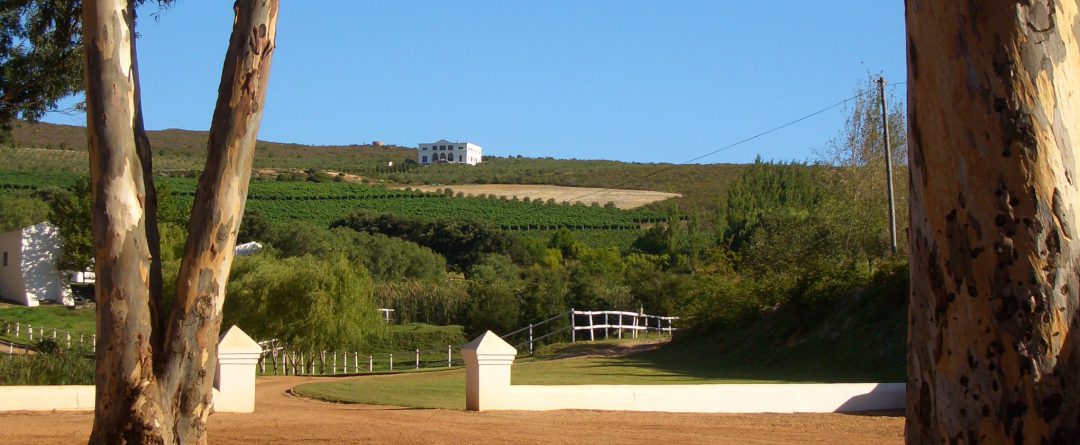Photo: Hamilton Russell Vineyards (by Jacky Blisson)
In Canada, we are often a little late to the party when it comes to new wine trends. So, if you still think South Africa is only good for inexpensive, nondescript white wines, you are forgiven. After all, that is pretty much all our liquor boards were stocking for years. Happily, all that is changing.
Read on for a three part series on the renaissance of the South African wine industry: why South Africa was typecast in a cheap ‘n cheerful role and how the industry has changed, what exciting regions to look for, and finally the people behind the wines.
South African wine producers often flinch when they see their wines lumped in to the ‘New World’ wine category. Indeed, the history of winemaking dates back to 1655, with the establishment of the country’s first vineyard by then governor Jan van Riebeeck. This may seem relatively recent when compared with the first Calabrian vines planted around 1500 B.C. And it may not appear to massively pre-date the Californian and Australian industries, which both originated in the late 1700s.
What makes South Africa stand apart from other New World regions in historical terms, is how quickly Cape wines rose to international prominence. While most other non-European wine producing nations saw little growth, and minimal export sales until the late 1900s, the sweet wines of Constantia were sought after by the European ruling class in the 1700s. According to the Oxford Wine Companion, Napoleon himself had the wine shipped in during his exile on St. Helena.
Despite this promising start, a series of misfortunes befell South African wine growers which slowly eroded the high quality image the famed Constantia wine or ‘Vin de Constance’ had brought. Pests in the form of voracious, grape eating birds meant that many estates picked too early resulting in thin, acidic wines. The Phylloxera epidemic followed, decimating over a quarter of the country’s plantings by 1890.
Partly in response to the variable wine quality and poor financial returns of so many wine farmers, a ‘super cooperative’ was formed in 1915 to bring unity and improve conditions. In short order, the KWV (Kooperative Wijnbouwers Vereniging van Zuid Afrika) became a powerful, controlling force in the South African wine industry. They were responsible for setting grape and wine prices, as well as quotas for wine production. Growers were incentivized on quantity, leading to ever increasing yields.
The international sanctions imposed by the apartheid regime led to a period of isolation. South African producers were cut off from the latest innovations in viticultural and vinification techniques, and lost touch with changing international tastes and trends.
With Mandela’s liberation from prison in 1990 came a resurgence in international interest for South African wines. Sadly, by this point, most of the nation’s vineyards were in a poor state. Vineyard virus was rampant. The grape varieties planted were unfashionable; mainly Chenin Blanc, Sultana and Colombard. Wine quality was, on the whole, pretty dismal.
Given the often thin, reedy nature of the whites and astringency of the (under-ripe) reds, major market were only willing to buy in at very low rates, positioning the wines at rock bottom prices on shelf. This set a precedent that has proved difficult for South Africa to shake off.
Fast forward a quarter of a century and the situation is radically different. The number of individual estates has more than doubled, with a growing number of small, boutique wineries commanding widespread acclaim. Massive advancements have been made in eradicating vineyard virus, reducing yields, achieving optimal ripening conditions and planting grape varieties best suited to individual vineyard sites.
The European and American press have been effusive in their praise of the new wave of top quality South African wines. Neal Martin, of Robert Parker fame, has proclaimed South Africa ‘the most dynamic and exciting New World country’. Tim Atkin MW, echoes this view, calling the wines ‘world class’.
In 2007, I spent a few months working the harvest at the top-rated Hamilton Russell Vineyards in the Walker Bay, and touring the wineries of the Western Cape. I saw first hand the incredible strides in quality. Carefully managed vineyards and impeccably clean wineries gleaming with modern technology were the norm. The producers we met were literally bursting with enthusiasm as they eagerly detailed their winemaking techniques and proudly poured their wines. It was a far cry from the cool, superior attitude I had thus far encountered when dealing with French vignerons.
High quality South African wines now exists not only at the luxury end of the spectrum, but also in the every day, sub 15$ category. Chenin Blanc continues to dominate white wine plantings, with Chardonnay and Sauvignon Blanc also enjoying high praise. Cabernet Sauvignon and Syrah are the two top seated reds, with increasing buzz generated by the bright, fruity old-vine Cinsault and elegant Pinot Noir. Gamey, smoky Pinotage (a South African created hybrid of Pinot Noir and Cinsault) provides a unique taste profile that further sets this exceptional wine region apart.
While I am loathe to place the wines of such a diverse, fast changing region into one mould, it is often true that South African wines seem to strike a stylistic balance between Old World and New. While bolder and fruitier than many European wines, they still tend to be more restrained, with greater intensity of savoury, earthy flavours than many of their American and Southern Hemisphere counterparts.

